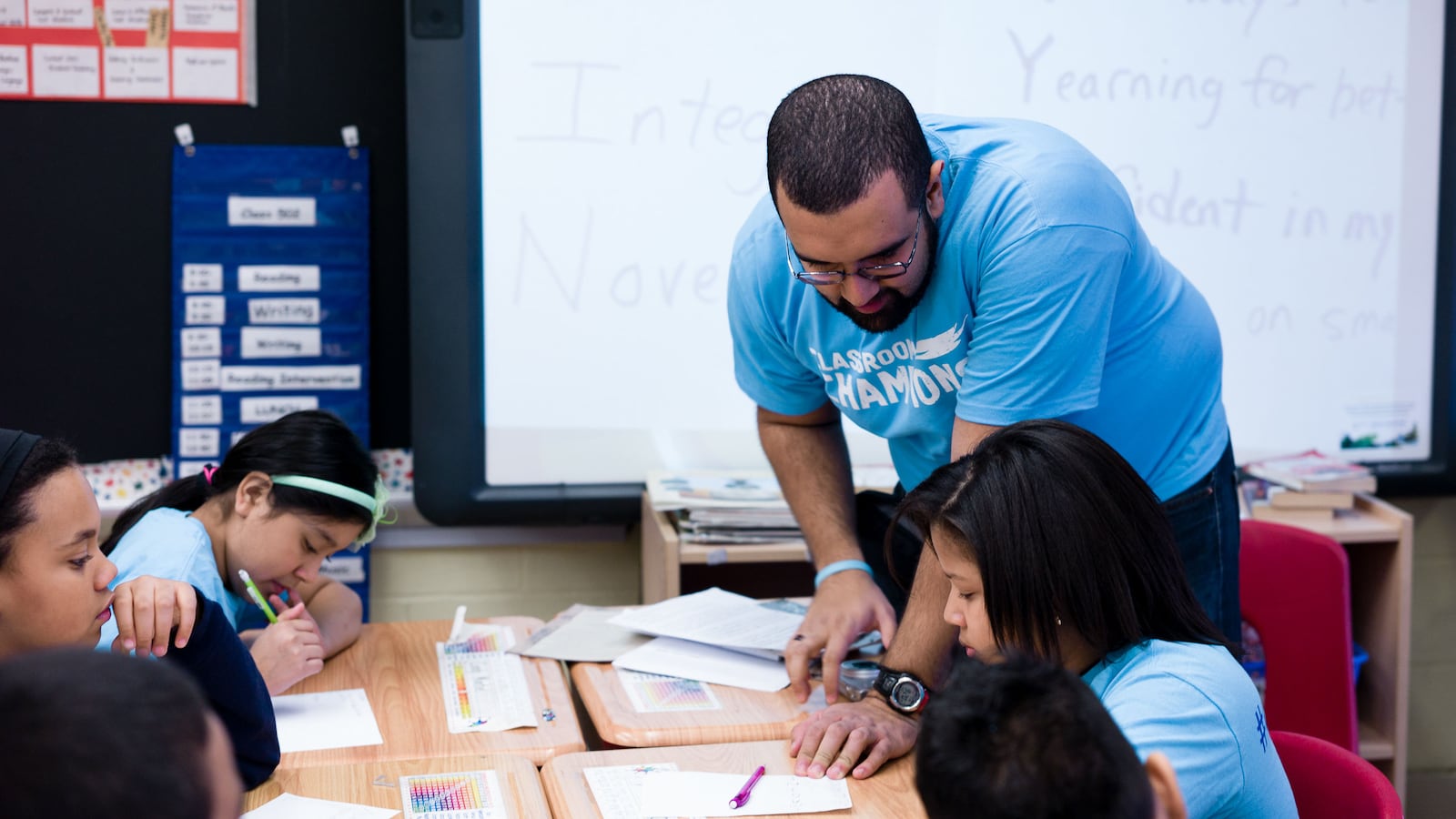Three years ago, I was dragging myself toward the end of my fourth year of teaching. The stress of testing and my struggles with the curriculum had me on the verge of burning out.
Today, I’m still a teacher. And, as odd as it may sound, what changed my outlook was two Olympic figure skaters.
At the end of that exhausting school year, I stumbled across an organization called Classroom Champions. It connects classrooms in low-income neighborhoods with Olympic and Paralympic athletes. I signed up, and my class of fifth graders was paired with then-U.S. Olympic silver medalist figure skaters, Meryl Davis and Charlie White.
In video chats over the course of the school year, Meryl and Charlie talked to my students about ways to set goals and what it looks like to persevere when situations get difficult. As a class, we created our own goals to raise money for the Penny Harvest program.
As Meryl and Charlie continued their journey to a second Olympics, we followed along. Then they won their first gold medal in the ice dancing competition at the 2014 Games in Sochi, Russia. It was an unforgettable experience to watch my students’ excitement.
By then, inspired by Meryl and Charlie, I wanted to make the next year even better.
April Holmes, the U.S. Paralympic gold medalist, became our new mentor. My fifth graders, many of whom receive special-education services, easily made connections between their own lives and the struggles April faced after losing her leg in a train accident when she was 18. When we set our own goals, every one of my students contributed items to our school’s food drive.
This past school year, my class worked with luge bronze medalist Erin Hamlin. With her guidance, they took on monthly challenges. The students brainstormed scenes in which they needed to be honest, then created their own screenplays, assigned roles, and decided how each scene would look on camera before filming them. They also wrote about situations when they showed perseverance — from memorizing their multiplication tables to facing their greatest fear by snow-tubing down a humongous hill.
My students spoke more often about achieving their goals and seemed more likely to offer each other an encouraging word. As Meryl, Charlie, April, and Erin persevered, my students wanted to persevere alongside them.
If this all sounds cheesy, or too good to be true, I get it. But it’s a fact that each year, the Olympic mentors have changed the feel and the character of my class.
The personal connections the athletes built with my students through video lessons and live chats brought out strengths I didn’t even know they had. I saw students who were extremely shy or struggled with public speaking raise their hands to ask their athlete mentors questions. I saw students who shied away from the spotlight challenge themselves to become leaders in the classroom, on our sports teams, and in our school government.
The program re-sparked my own passion, too. Having a chance to engage my students with new technology and infusing character education lessons into my curriculum made me love teaching again. Simply stated, Classroom Champions saved my teaching career.
A quote from one of my students after a chat with Erin Hamlin puts it best: “I can do more than what I think I can.”
About our First Person series:
First Person is where Chalkbeat features personal essays by educators, students, parents, and others trying to improve public education. Read our submission guidelines here.



